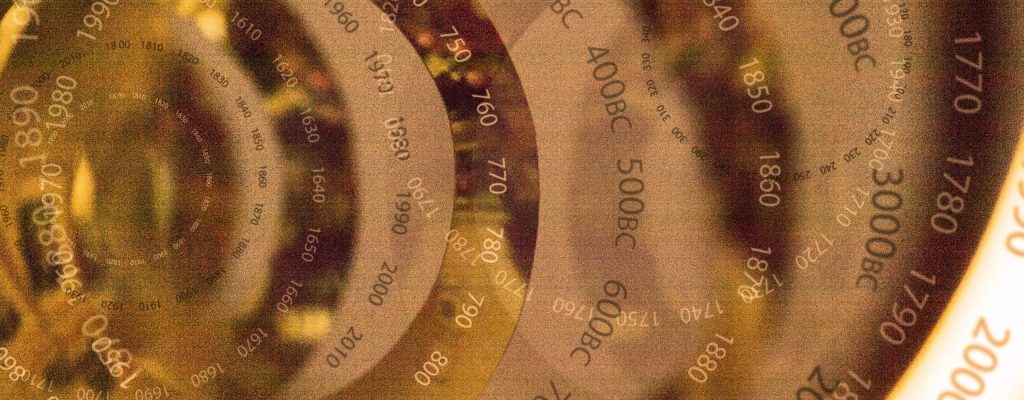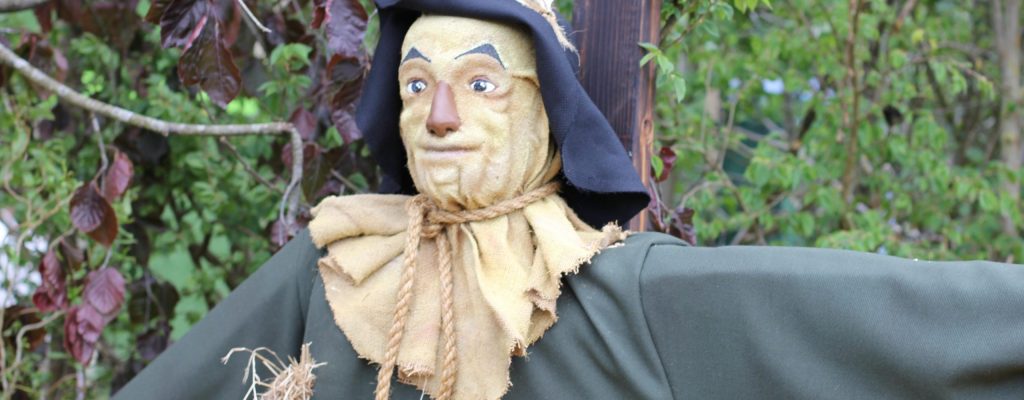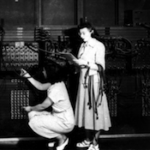Just like seeing or hearing TIME is a sense.
I was in a brief exchange with James Tsakalos, an NLP Trainer, colleague and FB friend of mine, about setting time frames in training events.
Fundamentally it was about when we begin and end training days with groups. I mentioned that I almost always begin the first day at 10:00 or 11:00, while I think James likes to start early. typically around 8:00.
My reasoning for this is that for most folks who work they typically begin their day earlier rather than later, say 8:00 – 9:00 versus 10:00 to 11:00, and starting at a different time signals very clearly “THIS is NOT THAT.”
The same can be said for other aspects of timing during the day, e.g.: ending times, or breaks … I usually break for 90 minutes for lunch, not 30 or 60 minutes. Again in part for the distinction that it makes versus many people’s standard routine, as well as because it gives them longer to integrate and incorporate the material we covered in the morning.
Also my lunch is ordinarily set at 1:00 PM/13:00, and it’s interesting how much that can shake people up who are habituated to an earlier time for lunch.
A Sense of Time
Most folks don’t think of TIME as a sense, but when you begin to you also get that time is a sense just like seeing or hearing, touch, taste or smell.
I also count vestibulation (balance) and proprioception (spatial & movement awareness) as senses. So in my world as a neuro-cognitive scientist there are eight senses I address that we use to discern data about the world we live in, move through, manipulate and experience. FWIW I don’t limit my list to just eight, I only keep these eight in the forefront of my awareness and in the loop when I’m discussing senses and sensation.
First a little background to where I’m going …
Way back when … I started my movement into consulting, coaching and training as a hypnotist and then I studied and became an NLP trainer. NLPers (those folks who are NLP practitioners) break down the five senses into what the call representational modalities, i.e.: visual (seeing), auditory (hearing), kinesthetic (feeling), olfactory (smelling), gustatory (tasting), shortened into the acronym VAK-O/G. Then they are trained to calibrate what representational modality that someone is accessing according to the VAK-O/G.
NLPers track the VAK-O/G representations that someone is using in a number of ways, but the most common are eye accessing (noticing where locationaly relative to the individual moving their eyes they rotate their gaze to, e.g.: upper left, lower right), language predicates, e.g.: “I see” … “It’s crystal clear to me.” … “You sound funny.” … “I’m feeling excited.” …, and in a more subtle and sophiticated approach by where in their body they are breathing from and the rate of their breathing, e.g.: upper chest, rapid breathing is associated with visual accessing verus lower belly, slow breathing with kinesthetic accessing.
Ideally NLPers want to cross calibrate and confirm their assessment of which representational modality a person is accessing by having two or more of these kinds of signals simultaneously happening, e.g.: they look up to their left (a visual access), while they say, “I observed you were moving a lot when I looked across the room.” and they say it quickly for them indicating a more rapid rate of breathing and expression associated with visual accessing.
Now, a bit later on in the development of NLP, let’s call it ten years to make it simple, one of the co-developers, Richard Bandler, began putting a lot of attention on what he called “submodalities” – or, more refined distinctions of the representational modalities. For instance if we use the visual representational modality (sight/seeing), we could speak to the distinctions of location … where is the image, what is the posititonal angle of the image (relative to the individual accessing it), how far away or close is the image … then there would be other things we could notice for as well, e.g.: size, color, brightness …
Okay, so as a NLPer I learned to calibrate and track for representational modality accessing and the finer aspects of sumbmodality distinctions. BUT, as a NLPer I was only introduced to these within the traditional five senses covered by the VAK-O/G list.
More Than The Traditional Five Senses
As I continued working with people, learning and studying I realized that I had to include both vestibulation (the vestibular process of the sensation of balance) and proprioception too (the awareness of spatial perception, our bodies in space relative to other objects, movement of our own body and other objects relative to one another, and the location and movement of our body relative to ourselves, e.g.: posture, limb articulation, etc. This radically changed how I worked with clients and over time how I perceived and experienced myself, and the world around me.
Then at some point I became aware of TIME as a sense like the traditional five senses, and vestibulation or proprioception. This was a powerful moment of awareness for me. To give some credit where it’s due I had some introduction to time as sense of sorts from other sources as well. NLPers also have an awareness of time, and they have a process they use called the “timeline” that indicated how people experience and position themselves relative to time. The NLP book that addresses the “timeline proccess,” “Timeline Therapry and the Basis of Personality” by Tad James and Wyatt Woodsmall. So I’d already had some influences vis-a-vis my discoveries about time with clients.
Time was a topic that the great American anthropologist E.T. Hall explored in his book, “The Dance of Time” and I’m a great fan and virtual student of his work. His work covered many “silent languages” as he referred to the non-verbal and cultural aspects of communication, perception and awareness in his many books. The more I learned about “silent languages” the more I became intrigued with how we perceive, think, process and act outside of the normally referred to ways that are what I’ll call fully conscious for now. In other words, some of what we do is available to use as a consciously aware experience we’re having or have had, and some of what we do is utterly outside of our conscious awareness and happens silently or invisibly as E.T. Hall might refer to it.
Time for most folks is outside of their conscious awarenss, except as they track it by the clock in modern life. Yet, internally we have incredibly sophisticated ways to track time that are organized primarily around the rising and falling processes of our internal physiology and its chemistry.
The Finer Distinctions Of Time … And Other Things Too
So as I continued my exploration of time I began to realize that time also has submodality distinctions, i.e.: finer ways of thinking about time than “it passes” or that it is a particular time based on the agreed to conventions of time … “clock time.” One of the things that both NLPers and E.T. Hall point out is that time “moves” differently for differnt people in different contexts and depending on what they are experiencing.
We’ve probably all experienced a time when we were with people we enjoyed being with and the sensation was that time just flew by and our experience with them was over in what seemed an instant. If you’ve ever been in a bureaucratic or institutional loop where you need to get something done, e.g.: renew your driver’s license or get a copy of your birth certificate, you might have experienced time moving much more slowly than the clock indicates, looking up after an hour and realizing it was actually only five minutes. Now if you love someone and you’re waiting to see them again multiple that by 10, and if you’re a five year old waiting for your birthday to arrive or Christmas maybe, multiple that by 100 (then of course when your birthday comes the party only lasts 1.5 seconds)!
But time does more than this … it also organizes our lives syntactically according to the rules of computation, e.g.: this happens before that and after this. Time therefore becomes the tableau upon which we write our lives in part, since we experience our lives syntactically, or happening in a sequence or events that occur according to the movemnt of time. The brilliant theoretical physicist and cosmologist, Stephen Hawking, wrote about time and space in his popular non-fiction book for lay folks (i.e.: those of us who aren’t theoretical physicists or cosmologists), “A Brief History of Time” where he lays out the relationship of time and space syntactically for the entire universe and everything in it as well.
This realization that time and space are singular leads to a secondary realization that the perception of time and space are also singular, meaning that for humans time and proprioception are singular as well. I’d argue that we also experiene balance as a function of time and space, making the actual human perceptual singularity the interwoven realtionality of time, proprioception and vestibulation. This is more than a little relavant with regard to action and outcomes too.
The Teleological Factor
Now to make things just a little more complex, I need to address the fact that I’m a “teleologist” by inclination. By that I mean that I think in terms of the future pulling us toward it versus the past pushing us forward.
So rather than being an artifact of our history we are artifacts of our futures … i.e.: we experience ourselves in relation to what has happened, just not yet. This is the teleological equation, and is built on the beliefs and expectations we hold about what will happen when we act or not. So we don’t act based on what we’ve experienced, but rather what we expect we will act upon and experience.
So this brings me around to my next point …
TIME IS A CONTEXT.
When I’m training I consider the context as important as the content I’m delivering. And I mean that literally. I organize the context as carefully, and often more carefully, than the content I deliver.
My shifting the relationship people in my training have, by doing something as simple as changing the start time to what might be “normally” expected, say 9:00 AM to 10:00 AM, it shifts the sense of where the participants are from “this” is like any other day, to “THIS” is NOT like any other day, “THIS DAY” is special in someway.
Now they reorganize their expectations to allow for something special to happen, making it that much more likely that something special will happen. There are many reasons that this can happen, but the simplest expectation is that because they are now experiencing themselves in relation to what’s happening as extraordinary compared to their normal day. When someone expects something out of the ordinary they begin to notice for it, even when it was something that was there all along. Even when what they are noticing for might have been missed or taken for granted before.
Also, one shift leads to another, when I shift the time frame that’s typical or normally expected, the relationship to time that someone hold shifts … like when they are on vacation and move through their day differently than when they are at work. So now we can use the presumption that when someone’s relationship with time has shifted and their hold on “normal” time is looser, and I can help them move through time differently.
For example, if there is something they want to attain or achieve that they perceive as far off in the future, when their sense of time is loosened we can shift it to bring it closer (remember my teleological premise of the future pulling us forward towards it … when that future is closer the pull tends to be stronger).
We gain another shift as well. When the pull of the future is stronger, because we’ve slid it closer in time, we also tend to become more adept at noticing for what will allow us to realize what we intend more effectively and efficiently. In some ways we shift the signal to noise ratio of what’s important to notice versus random data in the system that’s unimportant to us in regard to getting out outcome. This also allows us to adust and adapt more rapidly, and therefore we expend less energy and time getting to where we’re going.
So this simple thing of doing something outside of the expected, like starting an hour or so later than people are used to starting their day, becomes a vital contextual advantage to helping them make the shifts they need to so they can both succeed in getting their outcomes and geting them with less effort and time invested.
TRANSFORMATIONAL THINKING
There’s a big difference between shifting what someone thinks about and how someone thinks. To make big shifts in life it’s important to shift the way you think, NOT just what you think about, or how you think about it (whatever the “it” may be … money, relationships, health, fitness, security …).
The most significant thing that helps shift the way you think is shifting the way you experience the context you how whatever you’re thinking about within. Part of the premise I work from is that all thinking is both embodied and situated, i.e.: it occurs in and is shaped by the context it occurs within.
Now if we shift the context we will shift what is experienced within that context, since everything is experienced within the context it occurs within and is shaped by that context. Taking that a step further we can also presume, whether it’s true or not, that it’s possible that everything we expect to experience within a context is shaped by that context as well. Since we act upon and experience what we expect, how the context affects what we expect it also affects what we act upon and experience.
When you accept these presumptions of how context shapes experience you begin to recognize the the significance of shaping the context … hence the importance of shaping time as contextual frame and using it to help shape the way we think, and not just what we think about …
I’ve been describing it…
TIME IS A TOOL FOR TRANSFORMATION.
Joseph Riggio, Ph.D.
Architect & Designer of the MythoSelf Process and SomaSemantics
P.S. – I’d love to hear what you think too … leave me a comment below …
NOTE: Join the extended conversation in my FB group: GNAU Nation at: https://www.facebook.com/groups/GNAUNATION/









 Your choices aren’t only limited to the way you tie your shoes … and we’re not in Kansas anymore!
Your choices aren’t only limited to the way you tie your shoes … and we’re not in Kansas anymore! 